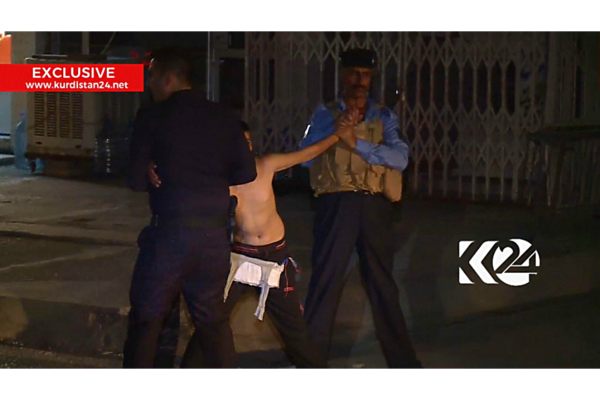
As the self-declared Islamic State (ISIS) has lost stretches of territory in Iraq and Syria and tens of thousands of fighters, it is relying more on child bombers.
On Sunday, security forces apprehended a 16-year-old with two kilograms of explosives underneath his Barcelona soccer jersey in the Iraqi city of Kirkuk. Earlier that day, a suicide bomber of about the same age killed themselves and six others outside a Shiite mosque in the northern Iraqi city.
ISIS’s increasing deployment of children is a shift in tactics, relying on this destructive and psychological warfare as it loses fighters and territory in Iraq and Syria.
"Child recruitment across the region is increasing," Juliette Touma, a UNICEF regional spokesperson, told Reuters. "Children are taking a much more active role ..., receiving training on the use of heavy weapons, manning checkpoints on the front lines, being used as snipers and in extreme cases being used as suicide bombers."
The Islamic State does not reveal the age of its operatives when it claims responsibility for bombings, according to The Washington Post. But, security forces are identifying an increasing number of children as bombers, since it’s easier for them to move throughout Iraq compared with young men of fighting age.
Among the most deadly attacks was at a youth soccer match in the southern Iraqi village of Asriya south of Baghdad in March. A suicide bomber who appeared no older than 15 or 16 struck during a trophy ceremony after the game. Forty-three people were killed, many of them children.
In Turkey, President Recep Tayyip Erdoğan said the bomber that struck a Kurdish wedding as guests were on the dance floor Saturday was no older than 14. Prime Minister Binali Yildirim has backed way from those comments. He said Monday it was too early to know who carried out the attack. But witnesses said the bomber was a child, which would make it the first time the Islamic State militants have used a child bomber in that country.
Al Qaeda in Iraq (AQI), the Islamic State's predecessor led by Abu Musab al-Zarqawi, used teenagers as suicide bombers in fighting the American occupation there. Through its “cubs of the caliphate” army of child soldiers, the Islamic State has borrowed those tactics. Researchers and officials told Reuters they are perhaps using children to build ranks depleted by losses, to preserve adult fighters, or simply to catch security forces off guard.
This comes as the United States has said the Islamic State is losing. It said the extremist group has lost as much as 47 percent of its territory in Iraq and 20 percent in Syria, according to testimony by Brett McGurk, the State Department’s point person on the Islamic State, to the Senate Foreign Relations Committee on June 28. And since the US started to lead airstrikes against the Islamic State two years ago, 45,000 IS fighters have been killed, said Lt. Gen. Sean MacFarland in a news briefing Aug. 10.
Hisham Al-Hashimi, an analyst and author who advises the Iraqi government on Islamic State, said that the group has reacted to these losses by reactivating its Heaven's Youth Brigade.
"Teenagers are easier to recruit for suicide missions, especially in moments of suffering or despair having lost loved ones," he said. "They also attract less attention and less suspicion than male adults."
Though the deployment of more child soldiers could be perceived as a desperate act, it can also be morally defeating, according to a study the Combating Terrorism Center at West Point military academy published in February.
“They represent an effective form of psychological warfare – to project strength, pierce defenses, and strike fear into enemy soldiers’ hearts,” reads the study.
The study examined IS propaganda on child and youth “martyrs” between January 2015 and 2016. It found three times as many suicide operations involving children over the year.
More child bombers also shows IS is proving it is adaptive, just as the bombing at the Ataturk airport in Istanbul did in June, as The Christian Science Monitor’s Scott Peterson wrote then:
Experts say the Istanbul strike is proof that the organization can adapt and mutate into a more traditional terrorist group. In a rare message last month, IS spokesman Abu Mohammed al-Adnani signaled just such a shift in strategy.
'It’s not enough to say that ISIS is losing; but what kind of mutation, what kinds of forms of terrorism will ISIS conduct in the future?' asks Gerges. 'ISIS is a dynamic, resilient organization that learns.'
http://www.csmonitor.com/World/Middle-East/2016/0823/Is-ISIS-turning-to-more-child-bombers

No comments:
Post a Comment